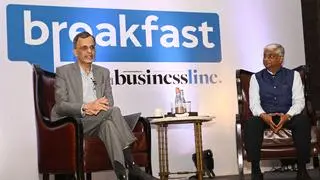Indian solar energy developers are having a good time thanks to a steep fall in the prices of imported modules, especially from China. According to many industry sources, today good quality Chinese solar modules are available at 14 cents a watt-peak—a historic low.
Chinese module prices at 14 cents a watt-peak defeat the purpose of BCD | Green Shift
Imports of solar cells and modules surged 78.3 per cent in April – July 2023, to $1.26 billion, compared with $711 million in the corresponding period of 2022. China accounted for 43 per cent of the imports, though a lot of the rest came from Chinese manufacturers in Vietnam, Malaysia and Thailand.
At these prices, imported modules continue to be cheaper than India-made ones, even if not significantly, raising a question mark over the relevance of the 40 per cent basic customs duty on imported modules (25 per cent on imported cells).
However, Indian manufacturers of solar modules are not hurt by cheap imports, as they have found a market in the US, which is not buying Chinese modules anymore due to “concerns over slave labour”.
India’s exports of solar modules have shot up 1,047 per cent to $616.73 million April-July 2023 from $53.76 million in the same period of 2022. The exports were almost entirely to the US ($607.69 m).
Indian manufacturers are benefiting from the US-China rift while also pocketing the production-linked incentives (PLI) of the government of India. But Indian solar developers are paying the BCD, which works out to about 6-7 cents, preventing solar tariffs from falling.
Standalone solar tariffs are of the order of ₹2.60-2.70 a kWhr. Tariffs of round-the-clock (RTC) or peak time supply are around ₹4.50-4.70, according to industry sources. These numbers would be lesser if it were not for the BCD, which is anyway not protecting the domestic manufacturers from cheap imports.
Also Read | How to neutralise China’s export ban on solar tech
Will prices fall further?
From around 2010-11, when India’s solar saga started, module prices have been falling—from about a dollar a watt-peak 12 years ago, to 14 cents now. Each time solar prices slid a notch, experts would say, “this is it, no further fall”, but the prices have continued to surprise.
As such it is hard to tell if prices will fall further.
Gaurav Mathur, India Head of Trina Solar, the Chinese solar module major, believes that since the prices of raw materials (silicon) are already very low and the manufacturers are not making money, module prices may not fall. However, if the Chinese yuan continues to decline against the US dollar (because the Chinese economy is not doing well), module manufacturers in China might get a little more room to drop prices.








Comments
Comments have to be in English, and in full sentences. They cannot be abusive or personal. Please abide by our community guidelines for posting your comments.
We have migrated to a new commenting platform. If you are already a registered user of TheHindu Businessline and logged in, you may continue to engage with our articles. If you do not have an account please register and login to post comments. Users can access their older comments by logging into their accounts on Vuukle.